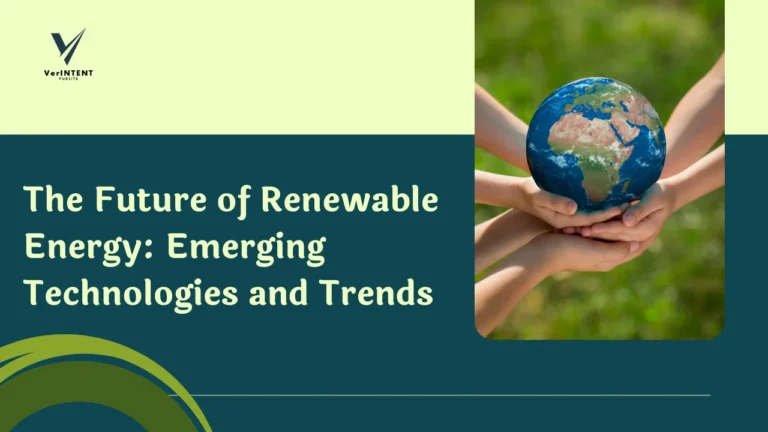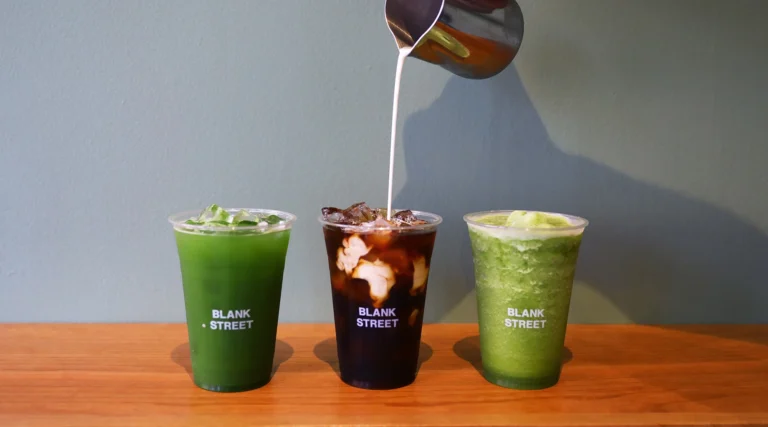How User-Generated Content Reshapes Marketing: Are you tired of traditional marketing methods that seem to fall flat in today’s digital age? Well, get ready to shake up your strategy because user-generated content (UGC) is here to revolutionize the way we market our brands. In this blog post, we will explore how UGC has risen to prominence and why it has become such a powerful tool in the world of marketing.
From successful campaigns to its benefits for small businesses, we’ll dive into all aspects of UGC and provide you with valuable tips for incorporating it into your own marketing strategy. So, buckle up and get ready for an exciting journey as we uncover how user-generated content reshapes the realm of marketing!
The Rise of User-Generated Content (UGC)
In recent years, there has been a remarkable shift in the way consumers engage with brands. Gone are the days when traditional marketing tactics held all the power. Instead, a new era has emerged – one where user-generated content (UGC) takes center stage.
So what exactly is UGC? It’s any form of content created by unpaid contributors who are not professionally affiliated with a brand. From customer reviews and testimonials to social media posts and blog comments, UGC encompasses a wide range of authentic content generated by real people.
The rise of UGC can be attributed to several factors. Consumers have become increasingly skeptical of traditional advertising methods that often feel forced or disingenuous. They crave authenticity and trust recommendations from their peers more than ever before.
Additionally, advancements in technology and social media platforms have made it easier for users to create and share content. With just a few taps on their smartphones, consumers can post photos, videos, or written reviews about products they love – or don’t love.
Brands have quickly realized the power of UGC as an incredibly effective marketing tool. By leveraging this type of content, companies can tap into the genuine enthusiasm and loyalty of their customers while building stronger relationships with them.
Moreover, studies have shown that UGC significantly influences purchasing decisions. According to research conducted by Nielsen, 92% of consumers trust peer recommendations over traditional forms of advertising. When potential buyers see positive reviews or user-created images showcasing products in action, it instills confidence in their minds.
As UGC continues to gain momentum across various industries and platforms worldwide – from fashion and beauty to travel and food – marketers must adapt their strategies accordingly if they want to stay relevant amidst this digital revolution.
Stay tuned as we delve deeper into why user-generated content is so effective in marketing strategies!
Why UGC is Effective in Marketing
User-generated content (UGC) has become a powerful tool in marketing strategies, and for good reason. It taps into the authenticity and trust that consumers place on their peers’ opinions. UGC provides genuine, real-life experiences and testimonials from actual customers, which can have a significant impact on potential buyers.
One of the main reasons why UGC is effective in marketing is its ability to create social proof. When people see others using and enjoying a product or service, they are more likely to trust it themselves. This kind of validation can greatly influence purchase decisions.
Moreover, UGC helps build brand loyalty as it fosters a sense of community among users. When customers actively participate by creating content about a brand they love, they feel connected to it on an emotional level. This connection leads to increased customer engagement and can turn them into brand advocates who promote the product or service organically.
Another advantage of incorporating UGC into marketing strategies is its cost-effectiveness compared to traditional advertising methods. Instead of spending large amounts of money on expensive ad campaigns, brands can leverage user-generated content at little or no cost. This approach allows businesses with limited budgets to still reach their target audience effectively.
Furthermore, UGC enables brands to tap into niche markets by allowing consumers within those communities to share their experiences with specific products or services tailored for them. By targeting these smaller audiences directly through user-generated content platforms like social media or online forums, companies can establish themselves as experts within those niches.
User-generated content has proven itself as an effective marketing strategy due to its ability to provide social proof, foster brand loyalty, offer cost-effective promotion opportunities, and reach niche markets directly through authentic consumer experiences.
Examples of Successful UGC Campaigns
UGC campaigns have proven to be a powerful marketing tool for brands across various industries. Let’s take a look at some successful examples that have made an impact.
- Coca-Cola’s “Share a Coke” campaign: This iconic campaign encouraged consumers to find bottles with their names or the names of loved ones on them, sparking excitement and engagement. People started sharing photos of themselves with personalized Coca-Cola bottles using the hashtag #shareacoke, creating a viral sensation.
- Starbucks’ White Cup Contest: In 2014, Starbucks invited customers to decorate their white coffee cups and share their creations on social media using the hashtag #WhiteCupContest. The response was overwhelming, with thousands of unique designs shared online. This not only generated buzz but also showcased customer creativity while indirectly promoting Starbucks’ brand.
- GoPro’s Photo of the Day: GoPro encourages its users to submit their best action shots taken with their cameras for a chance to be featured as the “Photo of the Day” on its website and social media platforms. This strategy has helped GoPro build an active community around its products while showcasing stunning user-generated content.
4.Fitbit’s “Fitbit Gallery”: Fitbit created an online gallery where users can submit photos that showcase how they incorporate fitness into their everyday lives using Fitbit devices.
The gallery not only serves as inspiration for others looking for ways to stay active but also reinforces brand loyalty by giving users a platform to share their accomplishments.
These successful UGC campaigns demonstrate how user-generated content can create genuine connections between brands and consumers while increasing brand visibility and reach.
How UGC Can Benefit Small Businesses
Small businesses often struggle to compete with larger corporations when it comes to marketing budgets. However, user-generated content (UGC) provides a cost-effective solution that can greatly benefit small businesses.
One of the main advantages of UGC for small businesses is its ability to build trust and credibility. When customers see real people using and enjoying a product or service, they are more likely to trust the brand and make a purchase themselves.
Additionally, UGC can help small businesses reach a wider audience. By encouraging customers to share their experiences on social media or review platforms, small businesses can tap into their existing customer base as well as potentially attract new customers through word-of-mouth referrals.
Moreover, UGC allows small businesses to engage with their audience in a meaningful way. By actively involving customers in the marketing process, it creates a sense of community and loyalty that goes beyond traditional advertising methods.
Furthermore, UGC provides valuable insights into customer preferences and behaviors. Small businesses can analyze the content generated by users to gain a better understanding of what resonates with their target audience and tailor future marketing efforts accordingly.
Tips for Implementing UGC into Your Marketing Strategy
- Encourage and Incentivize Participation: To get your audience excited about creating content, offer incentives such as discounts, freebies, or the chance to be featured on your social media channels. Make it clear that their contributions are valuable and appreciated.
- Provide Clear Guidelines: When asking users to generate content, provide clear guidelines on what you’re looking for. This could include specific themes, formats (e.g., photos or videos), or hashtags to use. The more specific you are, the more likely you’ll receive content that aligns with your brand’s messaging.
- Engage and Respond: Show your appreciation for user-generated content by engaging with it publicly. Like, comment on, and share posts from followers who have contributed to strengthen the connection between your brand and its community.
- Showcase User-Generated Content: Feature user-generated content prominently on your website and social media platforms. Highlighting real-life experiences of satisfied customers helps build trust in potential buyers.
- Monitor and Moderate: While user-generated content can be a powerful tool for marketing success, it’s crucial to monitor submissions closely to ensure they comply with ethical standards set by your brand.
- Leverage User-Generated Content Across Channels: Don’t limit yourself to just one platform when sharing user-generated content; spread the love across multiple channels like Instagram Stories, blog posts, email newsletters – wherever you engage with your audience!
By incorporating these tips into your marketing strategy effectively leverage user-generated content can help drive engagement while providing an authentic voice for promoting products or services organically!
Ethical Considerations When Using UGC
User-generated content (UGC) has revolutionized the way brands market their products and services. However, as with any marketing strategy, there are ethical considerations that need to be taken into account.
It is crucial for businesses to obtain proper consent from users before using their content in marketing campaigns. This ensures that individuals are aware of how their content will be used and gives them the opportunity to opt out if they so choose.
Transparency is key when utilizing UGC. Brands should clearly disclose when a piece of content has been created by a user and not by the brand itself. This helps maintain trust between consumers and companies.
Additionally, it’s important for businesses to give credit where credit is due. If an individual’s content is being shared or repurposed, proper attribution should always be given to acknowledge the original creator.
Furthermore, caution must be exercised when moderating UGC. While it may be tempting to filter out negative or critical comments about your brand, censoring genuine feedback can damage trust and authenticity.
Businesses should consider the potential impact on marginalized communities when implementing UGC strategies. It’s essential to avoid appropriating or exploiting cultural elements without permission or understanding.
By taking these ethical considerations into account when using UGC in marketing efforts, brands can build stronger relationships with their audience while maintaining integrity and respect for user-generated contributions
Conclusion : How User-Generated Content Reshapes Marketing
User-generated content (UGC) has become a powerful tool in reshaping the landscape of marketing. It allows brands to tap into the authentic experiences and voices of their customers, creating a more genuine connection with their target audience. Through UGC, businesses can leverage the power of social proof, encourage engagement, and enhance brand loyalty.
The rise of UGC is driven by its effectiveness in marketing efforts. By integrating user-generated content into their strategies, brands can harness the influence and reach of their customers to drive awareness and sales. UGC provides social proof that builds trust among consumers, as they see real people endorsing products or services.
Successful examples of UGC campaigns have demonstrated how it can captivate audiences and create a sense of community around a brand. From photo contests to hashtag challenges, companies like Coca-Cola and Starbucks have shown that encouraging user participation enhances brand visibility while fostering customer engagement.
Small businesses stand to benefit greatly from incorporating UGC into their marketing efforts. It provides an opportunity for them to amplify their message at a fraction of the cost associated with traditional advertising methods. By leveraging the creativity and passion of their customers through reviews, testimonials, or even product demonstrations on social media platforms, small businesses can increase brand exposure while building credibility within their niche market.
Implementing UGC into your marketing strategy requires careful planning and consideration. To effectively integrate user-generated content into your campaigns:
- Clearly define your objectives: Determine what you want to achieve through UGC – whether it’s increasing brand awareness or driving conversions – so you can align your efforts accordingly.
- Encourage participation: Create incentives for users to generate content by offering rewards such as discounts or exclusive access.
- Leverage social media platforms: Identify where your target audience spends most time online; this will help you focus your efforts on platforms where user-generated content thrives.
- Engage with users: Show appreciation for user-generated content by liking, commenting, and sharing it.







